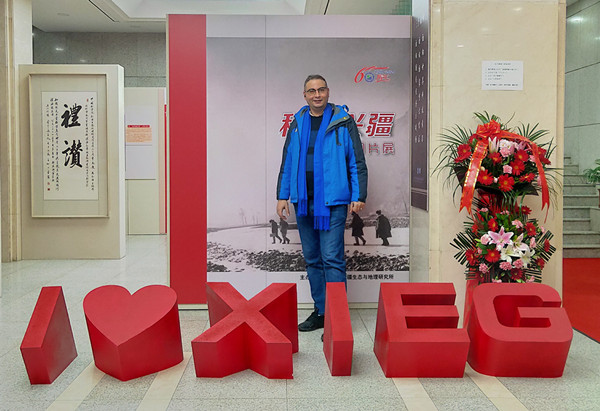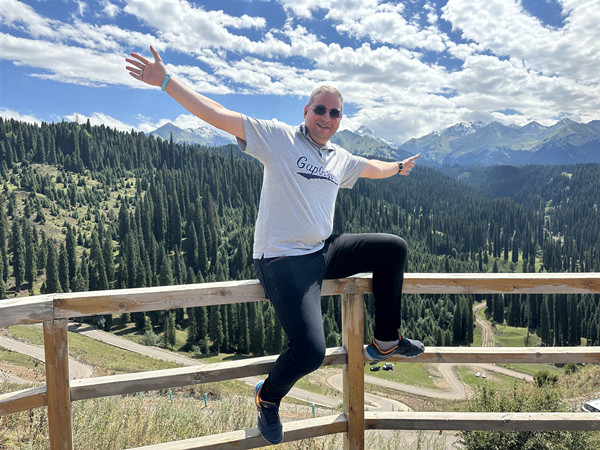


During the years 2022 and 2023, I had the privilege and honor of working as an Associate Professor supported by the Chinese Academy of Sciences (CAS) President’s International Fellowship Initiative (PIFI). For me, it is hard to explain in just a few words how much this experience has meant to me, in terms of both my professional and personal growth. I eventually chose to be based in Northwest China’s Xinjiang Uygur autonomous region. But before I can talk about my feelings about living and working in Xinjiang, allow me to first explain why I chose to work there out of all the cities in China.
I first heard of Xinjiang from a very good friend of mine, Dr. Ma Jinbiao, and his lovely wife, Dr. Li Li, who are working as Associate Professors at CAS’s Xinjiang Institute of Ecology and Geography. Dr. Li Li introduced me to our group leader, Professor Dr. Li Wenjun, who has supported me greatly over the years. As an Egyptian, I started to learn more about Xinjiang by using Google and YouTube. Xinjiang, which translates literally in English as “New Frontier”, is a name that I find very evocative. Located in northwestern China, Xinjiang is famous for its extraordinary natural landscapes and various ethnic customs. However, for almost every Chinese person I’ve ever met in China, none of them had actually been to this lightly populated region in Northwest China, that’s the reason I decided to come to Xinjiang, since I like exploring things myself.
Firstly, let me tell you about my work. Specifically, my research on exploring beneficial endophytic bacterial populations associated with medicinal plants and their role in plant growth promotion and biological control, which would involve an environmentally friendly approach and preserve biological resources in a sustainable agricultural system at the Xinjiang Institute of Ecology and Geography in Urumqi, a beautiful city in Xinjiang. During this time, I have published more than 50 SCI papers with young Chinese scientists, with a total Impact Factor of more than 150. Additionally, my h-index has reached 19, and my work has received more than 1,040 citations across 950 documents. Aside from publications and talks, the best outcome of this fellowship lies in the joy of exploring and discovering new concepts, with the awareness that our work contributes to humanity’s effort to push the boundaries of our understanding of the universe. Living on the campus of the University of the Chinese Academy of Sciences (UCAS) and being surrounded by students and Chinese friends has made me feel incredibly welcomed. Their curiosity to learn more about me, their kindness, and their warm-heartedness has touched me deeply. They are always willing to share anything they have with me, no matter how small. This behavior reflects the kind of people they are. Not only do the students treat me well, but my colleagues and school leaders also showed me the same level of kindness. This sense of belonging had made me feel like we are one big family under one roof.

Secondly, the food: Xinjiang cuisine, heavily influenced by Muslim cuisine, is some of the best food I’ve ever tried. I have tried dishes such as Xinjiang-styled braised chicken, Samsa, Meatball Soup, Pilaf, Naan, Lamb Kebab, Xinjiang-Styled Spiced Chicken with Chili Sauce, and Xinjiang Noodles. All of these dishes have been tried and tested, and they are out of this world. Xinjiang is known as the “land of melons and fruits”, which are famous both domestically and internationally. When I visit Hami, I can enjoy Hami melons, Hami red dates, and watermelons. Then, when I go to Turpan, I can indulge in grapes; in Korla, there are pears, figs, apricots, pomegranates, mulberries, nuts, and walnuts.
Thirdly, as I mentioned before, Xinjiang is famous for its extraordinary natural landscapes. I have traveled to numerous cities in Xinjiang for sightseeing. In Urumqi, I visited the Red Mountains, from which you can see the entire city. I have also been to several movie theaters, the Grand Bazaar — where I saw a variety of ethnic minority artifacts, the Tian Shan Mountains, and the Xinjiang Regional Museum. Outside of Urumqi, I have visited Turpan, Tacheng, the Flaming Mountains, and Kanas Lake in Altai.
Lastly, safety: one may ask if Xinjiang is a safe place to live, work, or visit. Although Xinjiang borders eight countries and four Chinese provinces, for travelers, Xinjiang is generally a safe place to visit. You can travel throughout much of the region, just as I have done for all these years. I feel safer here in Xinjiang than even in my own country. If you ever happen to have some free time, please come and visit Xinjiang and your entire perception of the place will change for the better.
For me, Xinjiang is my second home and I feel very comfortable living and working here. People from all walks of life work together for a common purpose: the betterment of Xinjiang. That is why my life and work in Xinjiang have been full of joy and worry-free. The leaders have been so helpful and cooperative, providing all the assistance I need to work successfully. Xinjiang will forever remain the place I call my second home. Now, I can say confidently with pride that I am a Xinjiang person and I love Xinjiang
I am grateful for all the support and contributions throughout this journey and for being the recipient of the most welcome award!
Source: Osama Abusaud,
Xinjiang Institute of Ecology and Geography,
Chinese Academy of Sciences